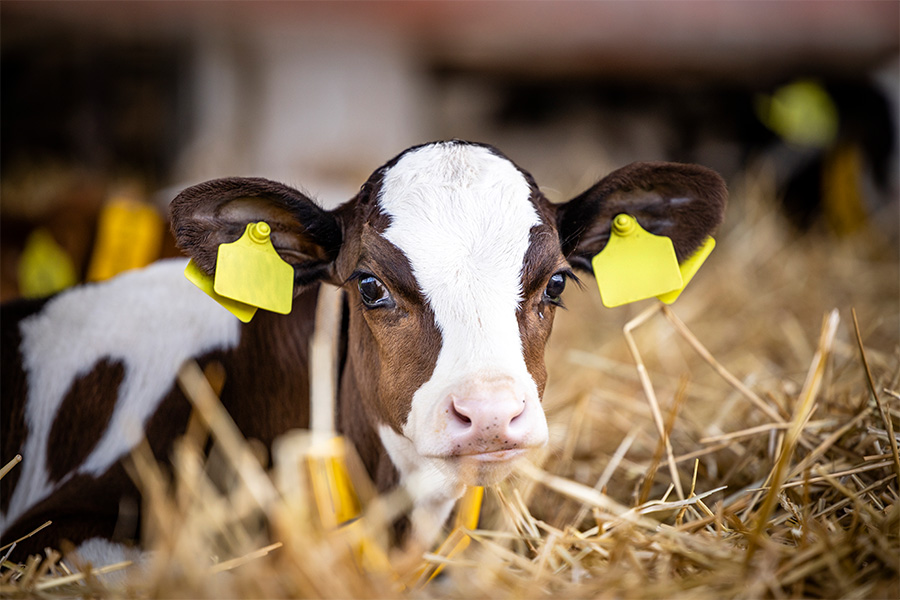Animal Production
-

New feed ingredients are evaluated and introduced to the feed industry every year. The evaluation process is necessary and includes feeding birds different levels of the test ingredient to estimate the maximum safe level (MSL). The MSL is usually estimated with a multiple range test, ignoring the fact that this test is inappropriate for this type of feeding trials where the independent variable is continuous. This paper describes the use of the Maximum Ingredient Optimization Workbook (MIOW) in estimating the MSL and determining the optimal combination or ingredient levels and replications for most efficient experimental design of future feeding trials. The MIOW calculates the results and the related descriptive statistics (SD, SE, Cl, and R2) based on simulation and non-linear regression models (broken-line linear and broken-line quadratic models).
Gene Pesti
|
-

Profitable cattle marketing means producing the most profitable calf, selling through the most profitable market outlet and pricing at the most profitable time. Unfortunately, most cow-calf producers simply sell their calves. Marketing means choices on how or what to put on the market, where to market and when to price. The first step in becoming a cattle marketer is to recognize all your alternatives and evaluate each in light of potential cost and returns, selecting the most profitable rather than the most convenient alternative.
R. Lacy and Carole Knight
|
-

A good pasture and forage program can provide quality feed and normally will be the most efficient and economical means of providing a substantial part of equine rations. In Georgia, we are fortunate to have a mild climate, soils suitable for producing forages and a good selection of highly productive forage species. With careful planning and good management, adequate grazing can be supplied for up to 10 months of the year in most areas of the state. To many producers, the term “horse pasture” denotes grazing management and forage crops unique to horses. This is not the case at all. Because the horse is a herbivore, most forage crops commonly used for cattle can also be used to provide grazing for horses.
John Andrae
|
-

This publication outlines the information needed to develop a Comprehensive Nutrient Management Plan (CNMP) for dry poultry litter operations.
Casey Ritz
|
-

Drought does not develop overnight but progressively over time. Proper management during a drought period can make or break a producer’s ability to stay in the cattle business. One main concern during a drought period is feeding and nutrition of the cow herd. Several problems could arise due to drought conditions. A good producer should stay alert for warning signs and avoid potentially damaging situations.
Carole Knight
|
-

Adjust rations for the dry matter (DM) content of each feed, especially when wet feeds, such as silage, are fed. Small changes in the DM content will change the nutrient profile of the ration. The potential results of not monitoring the DM content of wet feeds and adjusting rations accordingly are a combination of problems including decreased animal performance and feed efficiency and increased health problems and feed cost.
John Bernard
|
-

When examining horses for conformation, either when considering a purchase or competing in horse judging contests, it is important to break things down into key principles to avoid becoming overwhelmed when putting the overall picture together. There are five main criteria to evaluate when examining a horse’s conformation: balance, structural correctness, way of going, muscling, and breed/sex character (also known as type). This publication describes each of these criteria in detail.
Kylee Duberstein
|
-

Research has demonstrated that proper dry-off methods are vital in promoting udder health during the nonlactating period and at calving. For high producing cows, it may be necessary to decrease dietary energy over the last 1-2 weeks of lactation by increasing fiber and eliminating grain. Abrupt cessation of milking is probably as good as intermittent milking with a diet change for low and medium producing cows; however, intermittent milking is recommended for high producing cows to decrease milk yield and minimize leakage at dry-off, which could lead to mastitis. First lactation cows should be given a 50- to 60-day dry period, but multiparous animals fare well with a 35- to 45-day dry period. Selective dry cow therapy with non lactating cow antibiotics plus teat seal is as effective as blanket dry cow therapy with non lactating cow antibiotics plus teat seal for cows with SCC less than 200,000/ml. However, blanket dry therapy with both products is recommended for cows that dry off with greater than 200,000/ml. It is important to follow recommended infusion techniques to preserve the protective components of teat canal keratin and the sphincter muscle. And lastly, use of coliform vaccines will enhance immunity over the dry period and reduce clinical coliform mastitis in early lactation. This publication address these topics in more detail in order to help producers prevent mastitis in their dairy herds.
Stephen Nickerson
|
-

Prevalence of mastitis in dairy goats ranges between 5% and 30%, with Staphylococcus spp., otherwise known as the coagulase-negative staphylococci, identified as the most frequent cause of infection. These staphylococci produce persistent subclinical mastitis with markedly elevated somatic cell counts (SCC), which may lead to clinical symptoms.
Prevention is the key to controlling staphylococcal mastitis in dairy goats, as once this disease becomes established, chronic inflammation of mammary tissues and elevated SCC will follow, resulting in reduced milk yield and quality. This publication discusses proper husbandry practices and sanitation methods that can be implemented by producers. The results of two vaccine trials as a potential means to control mastitis in ruminants are also presented and discussed.
Vaccination should only be included as part of the whole herd approach to mastitis control. Any vaccination program must be carried out in conjunction with other proper management practices.
Lane Ely, Stephen Nickerson, and Felicia Kautz
|